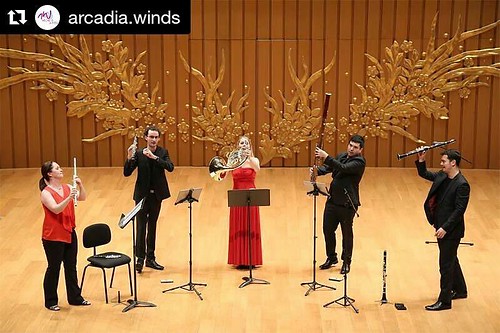Both the basal activity level and TOPBP1-stimulated activity from the S1333A protein are considerably increased compared to the wild form protein. Moreover, S1333 mutations to glycine, arginine, or lysine also create hyperactive kinases. Conversely, a S1333D mutation decreases ATR activity. Even though we come across no evidence that S1333 is phosphorylated in cultured cells, our research indicate that mutation of a single serine in the substantial, HEAT repeat area of this 2,644 amino acid protein is sufficient to greatly alter its activity. The precise mechanism mediating this alter will need a highresolution structural evaluation; however, these mutants give beneficial tools for studying the ATR pathway. added as well as GST-MCM2 substrate, and ATP. Reactions have been separated by SDS-PAGE and 32P incorporation onto the substrates was Chebulagic acid biological activity measured by a phosphorimager. Fold activation was calculated by dividing -MCM2 intensity by the intensity of -MCM2 for non-activated wild-type ATR. Experiments have been completed a minimum of 3 occasions, plus the Pluripotin chemical information figures present a representative experiment. Flow Cytometry The HU and UV recovery and G2 checkpoint assays were completed as previously described. Western Blotting and Immunoprecipitations Cell lysates have been created working with Igepal detergent lysis buffer ). Coimmunoprecipitation of the ATR-ATRIP complicated was performed working with nuclear extracts ready by hypotonic swelling, dounce homogenization, and high salt extraction. Anti-FLAG M2 beads had been washed three occasions with TGN buffer and as soon as with TGN buffer containing 0.5 M LiCl. Antibodies used consist of ATR-N19, HA, CHK1-G4, FLAGM2, ATRIP403, MCM2, phosphorylated Ser-317 CHK1, phosphorylated Ser-345 CHK1, and phosphorylated Ser-10 Histone H3. Phosphorylated Ser-108 MCM2 antibody was described previously. The phosphorylated Thr-1989 ATR antibody was generated by Epitomics together with the following peptide antigen: cFPENEpTPPEGKNML. Quantitative immunoblotting was done together with the Li-Cor Odyssey infrared imaging method. The values had been normally measured for both the phosphorylated protein along with the total protein and a ratio calculated to normalize for loading around the western blot. Furthermore, these ratios were then usually normalized to a single reference sample set at 1.0. Components and Techniques Cell Lines All cell lines were obtained from ATCC. HEK293T cells had been maintained in DMEM +7.5% FBS. HCT116 ATRflox/2TR cells have been generated previously, and maintained in McCoy’s 5A medium with 10% FBS and 10 mg/ml blasticidin.  Stable clonal ATR cell lines with tetracycline inducible ATR cDNAs containing the FLAG-HA3 epitope-tag were generated as previously described, and maintained in McCoy’s 5A medium containing 10%FBS, 300 mg/ml hygromycin B, and ten mg/ml blasticidin. Exogenous ATR expression was induced with 1 mg/ml tetracycline. Cre excision in the floxed allele was performed as previously described. PCR genotyping was performed using the following primers to confirm excision of the floxed allele as previously described: GTCTACCACTGGCATAACAGC and CAGCGGGAGCAGGCATTTC. DNA Constructs, Sequence Alignment, Structure Prediction Web site directed mutagenesis of ATR in a modified pCDNA5/TO FLAG-HA3 or pCDNA5/TO FLAG backbone was performed as previously described. Sequence alignments utilized ClustalW2. The protein structure prediction was done with Phyre2 working with ATR amino acids 13281364 for HEAT repeat 27. Results Mutation of Serine 1333 Alters ATR Kinase Activity ATR preferentially phosphorylates S/TQs. ATR consists of 19 of.Each the basal activity level and TOPBP1-stimulated activity in the S1333A protein are significantly enhanced when compared with the wild kind protein. Also, S1333 mutations to glycine, arginine, or lysine also build hyperactive kinases. Conversely, a S1333D mutation decreases ATR activity. While we find no proof that S1333 is phosphorylated in cultured cells, our studies indicate that mutation of a single serine within the massive, HEAT repeat region of this 2,644 amino acid protein is adequate to considerably alter its activity. The exact mechanism mediating this transform will need a highresolution structural evaluation; nevertheless, these mutants present valuable tools for studying the ATR pathway. added in conjunction with GST-MCM2 substrate, and ATP. Reactions were separated by SDS-PAGE and 32P incorporation onto the substrates was measured by a phosphorimager. Fold activation was calculated by dividing -MCM2 intensity by the intensity of -MCM2 for non-activated wild-type ATR. Experiments have been completed a minimum of three times, and also the figures present a representative experiment. Flow Cytometry The HU and UV recovery and G2 checkpoint assays were completed as previously described. Western Blotting and Immunoprecipitations Cell lysates had been developed using Igepal detergent lysis buffer ). Coimmunoprecipitation from the ATR-ATRIP complex was completed applying nuclear extracts ready by hypotonic swelling, dounce homogenization, and high salt extraction. Anti-FLAG M2 beads had been washed three times with TGN buffer and when with TGN buffer containing 0.five M LiCl. Antibodies employed include ATR-N19, HA, CHK1-G4, FLAGM2, ATRIP403, MCM2, phosphorylated Ser-317 CHK1, phosphorylated Ser-345 CHK1, and phosphorylated Ser-10 Histone H3. Phosphorylated Ser-108 MCM2 antibody was described previously. The phosphorylated Thr-1989 ATR antibody was generated by Epitomics with the following peptide antigen: cFPENEpTPPEGKNML. Quantitative immunoblotting was done together with the Li-Cor Odyssey infrared imaging system. The values have been ordinarily measured for both the phosphorylated protein and also the total protein in addition to a ratio calculated to normalize for loading around the western blot. In addition, these ratios have been then typically normalized to a single reference sample set at 1.0. Components and Strategies Cell Lines All cell lines have been obtained from ATCC. HEK293T cells had been maintained in DMEM +7.5%
Stable clonal ATR cell lines with tetracycline inducible ATR cDNAs containing the FLAG-HA3 epitope-tag were generated as previously described, and maintained in McCoy’s 5A medium containing 10%FBS, 300 mg/ml hygromycin B, and ten mg/ml blasticidin. Exogenous ATR expression was induced with 1 mg/ml tetracycline. Cre excision in the floxed allele was performed as previously described. PCR genotyping was performed using the following primers to confirm excision of the floxed allele as previously described: GTCTACCACTGGCATAACAGC and CAGCGGGAGCAGGCATTTC. DNA Constructs, Sequence Alignment, Structure Prediction Web site directed mutagenesis of ATR in a modified pCDNA5/TO FLAG-HA3 or pCDNA5/TO FLAG backbone was performed as previously described. Sequence alignments utilized ClustalW2. The protein structure prediction was done with Phyre2 working with ATR amino acids 13281364 for HEAT repeat 27. Results Mutation of Serine 1333 Alters ATR Kinase Activity ATR preferentially phosphorylates S/TQs. ATR consists of 19 of.Each the basal activity level and TOPBP1-stimulated activity in the S1333A protein are significantly enhanced when compared with the wild kind protein. Also, S1333 mutations to glycine, arginine, or lysine also build hyperactive kinases. Conversely, a S1333D mutation decreases ATR activity. While we find no proof that S1333 is phosphorylated in cultured cells, our studies indicate that mutation of a single serine within the massive, HEAT repeat region of this 2,644 amino acid protein is adequate to considerably alter its activity. The exact mechanism mediating this transform will need a highresolution structural evaluation; nevertheless, these mutants present valuable tools for studying the ATR pathway. added in conjunction with GST-MCM2 substrate, and ATP. Reactions were separated by SDS-PAGE and 32P incorporation onto the substrates was measured by a phosphorimager. Fold activation was calculated by dividing -MCM2 intensity by the intensity of -MCM2 for non-activated wild-type ATR. Experiments have been completed a minimum of three times, and also the figures present a representative experiment. Flow Cytometry The HU and UV recovery and G2 checkpoint assays were completed as previously described. Western Blotting and Immunoprecipitations Cell lysates had been developed using Igepal detergent lysis buffer ). Coimmunoprecipitation from the ATR-ATRIP complex was completed applying nuclear extracts ready by hypotonic swelling, dounce homogenization, and high salt extraction. Anti-FLAG M2 beads had been washed three times with TGN buffer and when with TGN buffer containing 0.five M LiCl. Antibodies employed include ATR-N19, HA, CHK1-G4, FLAGM2, ATRIP403, MCM2, phosphorylated Ser-317 CHK1, phosphorylated Ser-345 CHK1, and phosphorylated Ser-10 Histone H3. Phosphorylated Ser-108 MCM2 antibody was described previously. The phosphorylated Thr-1989 ATR antibody was generated by Epitomics with the following peptide antigen: cFPENEpTPPEGKNML. Quantitative immunoblotting was done together with the Li-Cor Odyssey infrared imaging system. The values have been ordinarily measured for both the phosphorylated protein and also the total protein in addition to a ratio calculated to normalize for loading around the western blot. In addition, these ratios have been then typically normalized to a single reference sample set at 1.0. Components and Strategies Cell Lines All cell lines have been obtained from ATCC. HEK293T cells had been maintained in DMEM +7.5%  FBS. HCT116 ATRflox/2TR cells had been generated previously, and maintained in McCoy’s 5A medium with 10% FBS and 10 mg/ml blasticidin. Steady clonal ATR cell lines with tetracycline inducible ATR cDNAs containing the FLAG-HA3 epitope-tag were generated as previously described, and maintained in McCoy’s 5A medium containing 10%FBS, 300 mg/ml hygromycin B, and 10 mg/ml blasticidin. Exogenous ATR expression was induced with 1 mg/ml tetracycline. Cre excision of your floxed allele was carried out as previously described. PCR genotyping was completed with the following primers to confirm excision of the floxed allele as previously described: GTCTACCACTGGCATAACAGC and CAGCGGGAGCAGGCATTTC. DNA Constructs, Sequence Alignment, Structure Prediction Web-site directed mutagenesis of ATR within a modified pCDNA5/TO FLAG-HA3 or pCDNA5/TO FLAG backbone was performed as previously described. Sequence alignments utilized ClustalW2. The protein structure prediction was carried out with Phyre2 employing ATR amino acids 13281364 for HEAT repeat 27. Benefits Mutation of Serine 1333 Alters ATR Kinase Activity ATR preferentially phosphorylates S/TQs. ATR contains 19 of.
FBS. HCT116 ATRflox/2TR cells had been generated previously, and maintained in McCoy’s 5A medium with 10% FBS and 10 mg/ml blasticidin. Steady clonal ATR cell lines with tetracycline inducible ATR cDNAs containing the FLAG-HA3 epitope-tag were generated as previously described, and maintained in McCoy’s 5A medium containing 10%FBS, 300 mg/ml hygromycin B, and 10 mg/ml blasticidin. Exogenous ATR expression was induced with 1 mg/ml tetracycline. Cre excision of your floxed allele was carried out as previously described. PCR genotyping was completed with the following primers to confirm excision of the floxed allele as previously described: GTCTACCACTGGCATAACAGC and CAGCGGGAGCAGGCATTTC. DNA Constructs, Sequence Alignment, Structure Prediction Web-site directed mutagenesis of ATR within a modified pCDNA5/TO FLAG-HA3 or pCDNA5/TO FLAG backbone was performed as previously described. Sequence alignments utilized ClustalW2. The protein structure prediction was carried out with Phyre2 employing ATR amino acids 13281364 for HEAT repeat 27. Benefits Mutation of Serine 1333 Alters ATR Kinase Activity ATR preferentially phosphorylates S/TQs. ATR contains 19 of.
